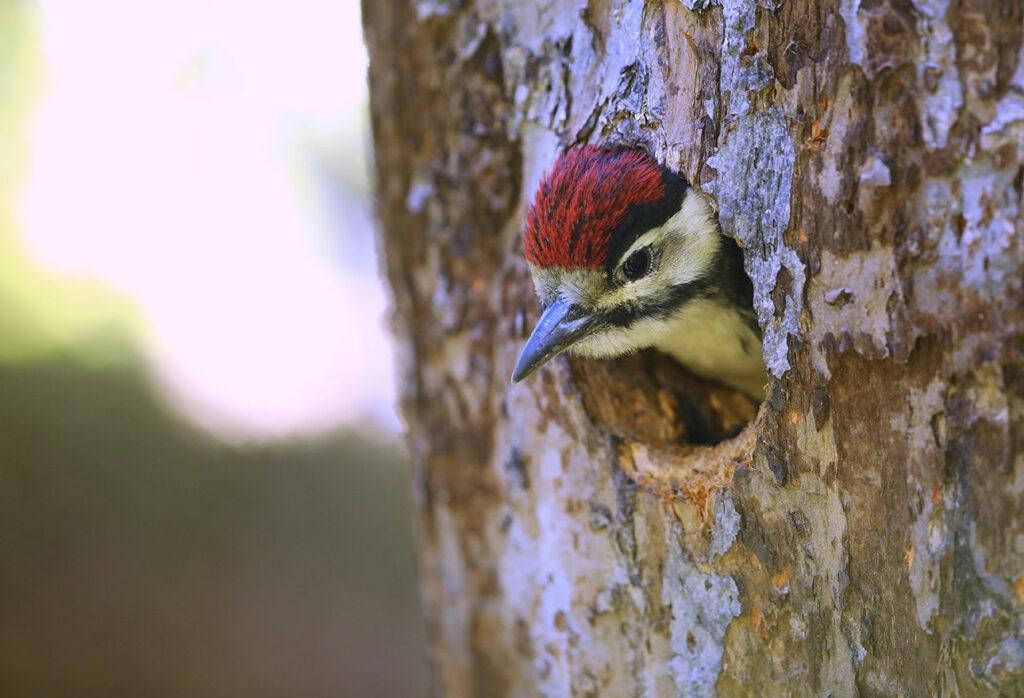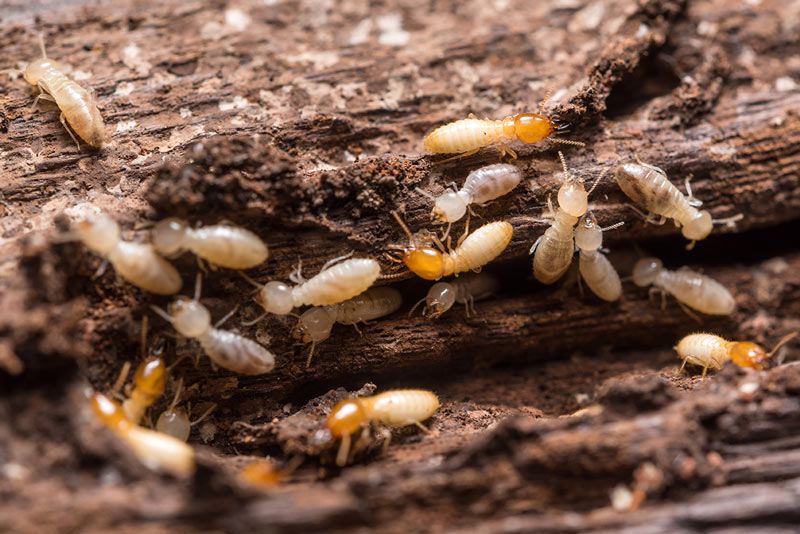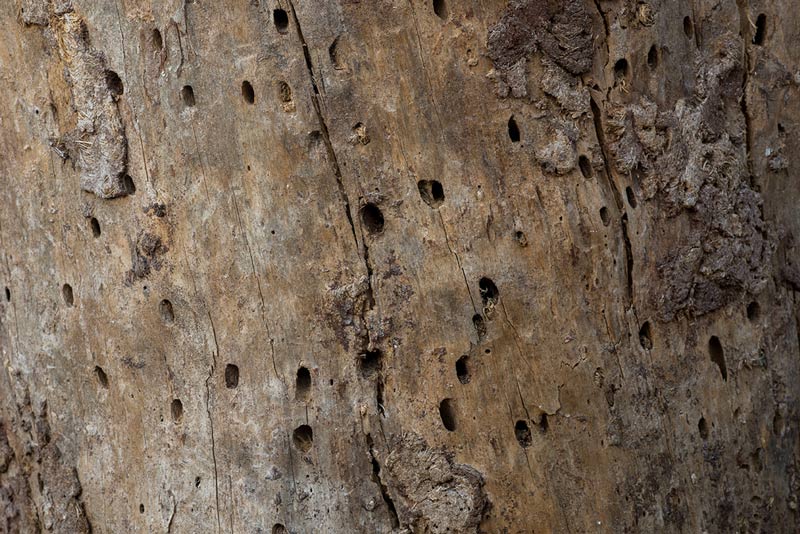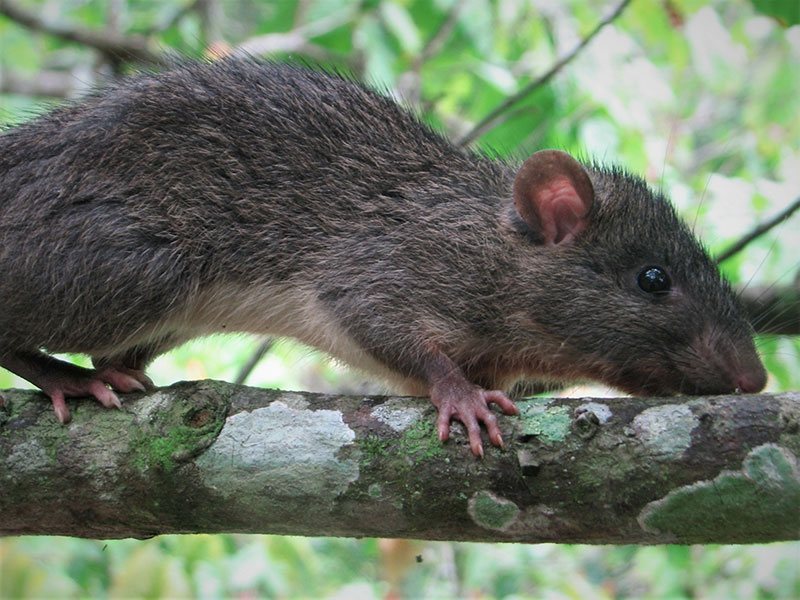What’s Eating My Trees? Common Sonoma County Tree Pests and How to Manage Them this Fall
Sonoma County trees fall victim to a number of predators, large and small. The drought conditions that this area has been enduring continues to take a toll and weaken our plants and trees. Drought stress in trees opens them to an array of pests that they could otherwise fend off. Therefore, it’s important to keep a close eye on our trees and watch for signs of infestation and damage from common pests.
In this article, we will look at four common tree pests to keep an eye out for in Sonoma County this Fall season: woodpeckers, termites, bark beetles, and rodents. Learn how to detect the signs of damage and what to do to prevent it or manage it.
1. Woodpeckers

Woody the Woodpecker aside, woodpeckers may be cute and comical, but the damage they cause to the bark of a tree can make it more susceptible to diseases and other pest infestations. The presence of woodpeckers could also indicate that it’s time to inspect the tree for the more damaging pests that the birds are after.
Once woodpeckers have a favorite tree, they peck at it to feed on insects within, as well as store food and build nests in the tree’s limbs and trunk. When they peck at the same level continually, they “girdle” the tree, which can kill the tree above that point, causing instability and tree death.
Signs of Woodpecker Damage on Your Trees
Even if you don’t hear Woody in action, an inspection of your trees can reveal that he’s pecking away while you’re not looking or out of earshot.
Here’s what to look for:
- Holes in a straight, horizontal line
- Insect infestation and holes
How to Manage Woodpecker Tree Damage
Unlike the insects they feed upon, woodpeckers must be deterred rather than exterminated. Killing them will make an enemy of your bird-watching friends and could cost you a fine as well. While we consider them fall tree pests, the government does not. They are protected by the Migratory Bird Act of 1918. So, what to do?
How to Keep Woodpeckers Away:
- Remove their food source with insecticides from your tree care or pest control provider
- Lure them to a better food source with a suet bird feeder that you gradually move further and further from the tree (and your house)
- Scare them away with shiny windsocks and balloons attached to the tree, sold as “woodpecker deterrents”
2. Termites

Nobody wants termites in their home. Undetected, they can cause tremendous damage. Your trees share the same risk as your house. However, not only can your trees suffer, but the termites in your trees may find their way to your home.
Spotting termite damage on your trees as early as possible will help preserve their health and reduce the risk of a termite infestation spreading to your home.
Signs of Termite Damage on Your Trees:
- Mud tubes (like spaghetti thrown across the bark’s surface)
- Soft, brittle wood (pierce to see if it’s easily penetrated)
- Nearby nests on the ground consisting of wood and soil
How to Manage Termite Tree Damage
- Early detection
- Preventative ground sprays to deter termites
- Having routine tree inspections by a Certified arborist
- Liquid termiticide administered by a pest control expert for cases caught early
- Professional tree removal if the infestation has progressed too far
3. Bark Beetles

Unhealthy trees, such as those suffering from drought stress, fall victim more easily to all kinds of infestation because their natural defenses are compromised. Due to climate change, drought, and more than a hundred years of fire suppression, the bark beetle has proliferated at an alarming rate in California.
In fact, Napa and Lake County have declared a state of emergency due to the increased risk of wildfires caused by the massive die-off of conifer trees infested by Bark Beetles. According to a recent SF Chronicle article1, their numbers have grown such that the beetles are launching “mass attacks,” targeting healthy conifers, and even infesting oak trees.
The Dangers of Bark Beetle Tree Infestation
The beetles burrow into the bark of the tree and produce a fungus that interrupts the tree’s circulation of vital nutrients. A healthy tree expels these pests through pitch tubes or bubbles of sap the tree uses to push them out. If a colony of bark beetles has successfully colonized a tree, it’s too late to save it. Professional tree removal is the only way to help prevent the infestation from spreading to other nearby trees.
Signs of Bark Beetle Damage on Your Trees
- Reddish-brown pitch tubes (white ones demonstrate successful pest expulsion)
- Flaking or holey bark
- Increase in wood-peckers and other foraging birds
- Yellow to brown foliage
- Dead upper portions
How to Manage Bark Beetle Tree Damage
- Keep trees healthy and strong to help prevent infestation
- Insecticides
- Ground sprays
- Removal of the infected tree
4. Rodents

In the winter months, when food is scarcer, rodents may come after your trees–especially the saplings, which are more juicy and tender. Voles, mice, and rabbits chew on the bark near the base of the tree with the sole mission of getting to the soft, tasty cambium layer beneath. If they systematically gnaw all around the tree at the same level, the tree is “girdled,” and can be severely compromised because its circulatory system has been damaged. In extreme cases, the tree can die and topple.
Fall prevention can save your trees from these gnawing varmints feasting in the winter.
Signs of Rodent Damage on Your Trees
- Bark stripped around the base of the tree
- Obvious indentations at approximately the same height around the base of the tree
- Gnaw marks on exposed roots, or on portions of the trunk just below the ground level
How to Manage a Rodent Tree Damage
Unfortunately, if the tree has been girdled, it may not survive. You will need to contact an arborist to determine the extent of the damage and assess whether it needs to be removed before it topples. If the damage is not severe, the tree may heal itself. There is no treatment for rodent damage. However, there are ways to prevent it.
Prevent Rodent Damage with these Easy Solutions:
- Wrap the bottom three feet of the trunk with a tree protector or tree tube, also sinking it several inches into the soil to prevent critters from digging under
- Mulch around the tree
- Place pea gravel at a one-inch depth around the tree
Take Care of Fall Tree Pests with Certified Arborists at Vintage Tree Care

Our certified arborists are here to help ensure the longevity of the health and beauty of your property with personalized tree care. If your trees are showing signs of pest damage or drought stress, contact us for a professional health inspection by calling (707) 495-4686 or contact us online today.
1 “Wine Country is reeling from ‘mass attacks’ on trees. Here’s what is going on” by Kate Galbraith, SF Chronicle, September 25, 2022.

